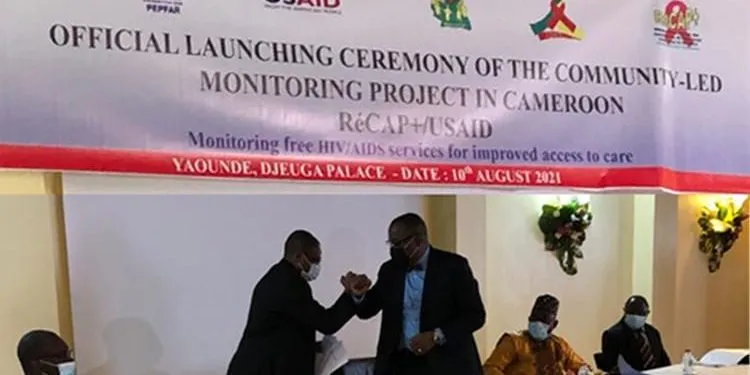The prevalence of HIV among adults ages 15 to 64 years in Cameroon is 3.7%.
This corresponds to approximately 500,000 people living with HIV (PLHIV) ages 15-64 years in Cameroon.
It is against this backdrop that the government in collaboration with the United States Agency for International Development, USAID/Cameroon have officially launched the Community-Led Monitoring Project for Effective Elimination of User fees for HIV patients in Cameroon.
The project that is implemented by the Cameroonian network of organizations for people living with HIV (Recap+) received a grant of CFA 780,470,000 (USD $1.4 million) from the U.S. Government.
The grant is expected to improve community participatory monitoring systems for HIV services over the next three years in 147 health districts across the 10 regions of Cameroon.
Speaking during the opening the opening ceremony, the Secretary General of the Ministry of Public Health, Prof. Louis Richard Njock, re-echoed the engagement of the government of Cameroon to eliminate HIV user fees in the various health districts in Cameroon and ensure that beneficiaries are at the center of health policies.
On his part, Dr. Jose Tchofa, USAID/Cameroon Health Office Director, highlighted that ‘‘this project complements the U.S. Government’s larger scale health assistance to Cameroon through the President’s Emergency Plan for AIDS Relief (PEPFAR)”.
The project will help reduce HIV infection and transmission, ensure all HIV-positive beneficiaries are retained in care, and improve the health and well-being of children living with and affected by HIV/AIDS.
He disclosed that, U.S. Government remains committed to supporting Cameroon to end HIV/AIDS as a public health threat by 2030.
In 2019, Eswatini had the highest prevalence of HIV with a rate of 27 percent. Other countries, such as Zimbabwe, have significantly decreased their HIV prevalence.
In sub-Saharan Africa, AIDS is the leading killer and a large reason for the high transmission rates is because of the lack of education provided to youth. When infected, most children die within one year because of the lack of treatment.
By Timfuchi Aaron


